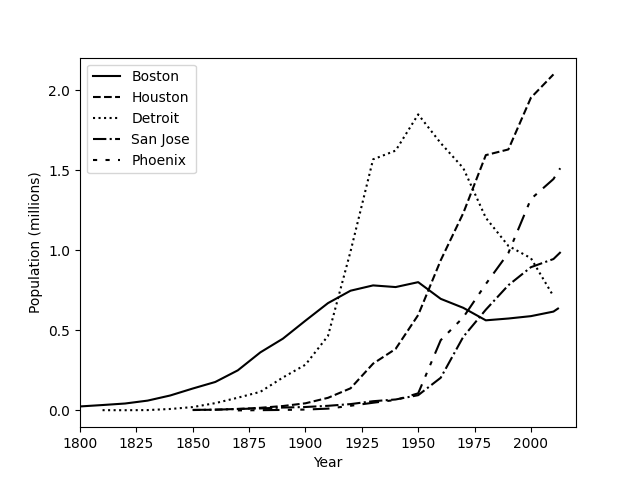Learning Scientific Programming with Python (2nd edition)
E7.3: Population changes in five US cities
The historical populations of five US cities are given in the files boston.tsv, houston.tsv, detroit.tsv, san_jose.tsv, phoenix.tsv as tab-separated columns of (year, population). They can be downloaded as us-city-populations.zip.
The following program plots these data on one set of axes with a different line style for each.
import matplotlib.pyplot as plt
import numpy as np
fig, ax = plt.subplots()
cities = ["Boston", "Houston", "Detroit", "San Jose", "Phoenix"]
# line styles: solid, dashes, dots, dash-dots, and dot-dot-dash
linestyles = [
{"ls": "-"},
{"ls": "--"},
{"ls": ":"},
{"ls": "-."},
{"dashes": [2, 4, 2, 4, 8, 4]},
]
for i, city in enumerate(cities):
filestem = city.lower().replace(" ", "_")
filename = f"{filestem}.tsv"
yr, pop = np.loadtxt(filename, unpack=True)
(line,) = ax.plot(yr, pop / 1.0e6, label=city, color="k", **linestyles[i])
ax.legend(loc="upper left")
ax.set_xlim(1800, 2020)
ax.set_xlabel("Year")
ax.set_ylabel("Population (millions)")
plt.show()
A plot of the historical populations of five US cities.